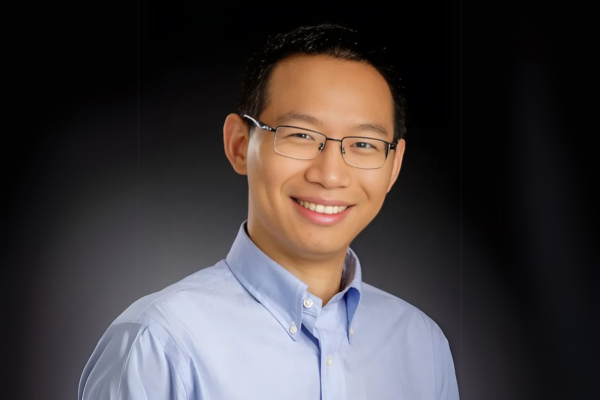Posted on April 16, 2025 by Rebekah Alegria

Yuanxiong Guo Headshot
The two-year project aims to train a skilled workforce capable of advancing clean energy technologies while addressing challenges in energy integration and security.
The initiative, known as the Hispanic Alliance for Clean Energy Education and Research (HACEER), is a collaborative effort among six Minority-Serving Institutions focused on renewable energy workforce development.
As a key partner in the initiative, UTSA will lead efforts to develop artificial intelligence (AI) and cybersecurity solutions to enhance the resilience of the nation’s power grid. The project lead is the University of Texas at El Paso with collaborators including the University of Texas at Arlington, University of Houston and the University of Puerto Rico at Mayagüez.
With the growing integration of renewable energy into the power grid, maintaining real-time balance between energy supply and demand has become increasingly complex. At the same time, the energy sector is facing a rising number of cybersecurity threats, which can disrupt operations and pose serious risks to infrastructure. Guo’s research will tackle both of these issues by focusing on two key areas: developing AI methods to improve energy efficiency when using high levels of renewable energy and creating defense strategies to protect data security and privacy during renewable energy integration.
“This project aligns with broader goals of advancing clean energy research and education while fostering a sustainable workforce capable of meeting the demands of the rapidly growing clean energy sector across the United States,” said Yuanxiong (Richard) Guo.
As part of this project, Guo will train and mentor both graduate and undergraduate students. Several graduate students will be hired as research assistants to work directly on AI and cybersecurity challenges related to clean energy, while undergraduate students will have the opportunity to participate in summer internships and gain hands-on experience.
“This project will provide numerous opportunities for students to engage in transformative research and training,” Guo explained. “They will work on pioneering topics such as using AI to enhance grid resilience, securing operations against cyber threats and optimizing renewable energy integration.”
In addition to research roles, students will also benefit from a new multidisciplinary course on renewable energy that is being developed as part of the project. This course will include modules specifically focused on AI and cybersecurity applications in energy systems.
Beyond academic training, the HACEER project also includes plans to connect students and faculty with professionals in the field. UTSA and its partner institutions will organize workshops featuring speakers from Sandia National Laboratories and local utility companies. These sessions will provide real-world insight into clean energy challenges and prepare students to meet the needs of a rapidly-evolving industry.
Guo is particularly excited about the collaborative and multidisciplinary nature of the project, which brings together experts from electrical engineering, computer science, cybersecurity, environmental engineering and STEM education.
“This diversity of perspectives will drive innovative solutions and create a lasting impact,” he said. “The course materials and research experiences we’re developing won’t just prepare students for careers; they’ll contribute to building a smarter, more secure and more resilient energy future.”

